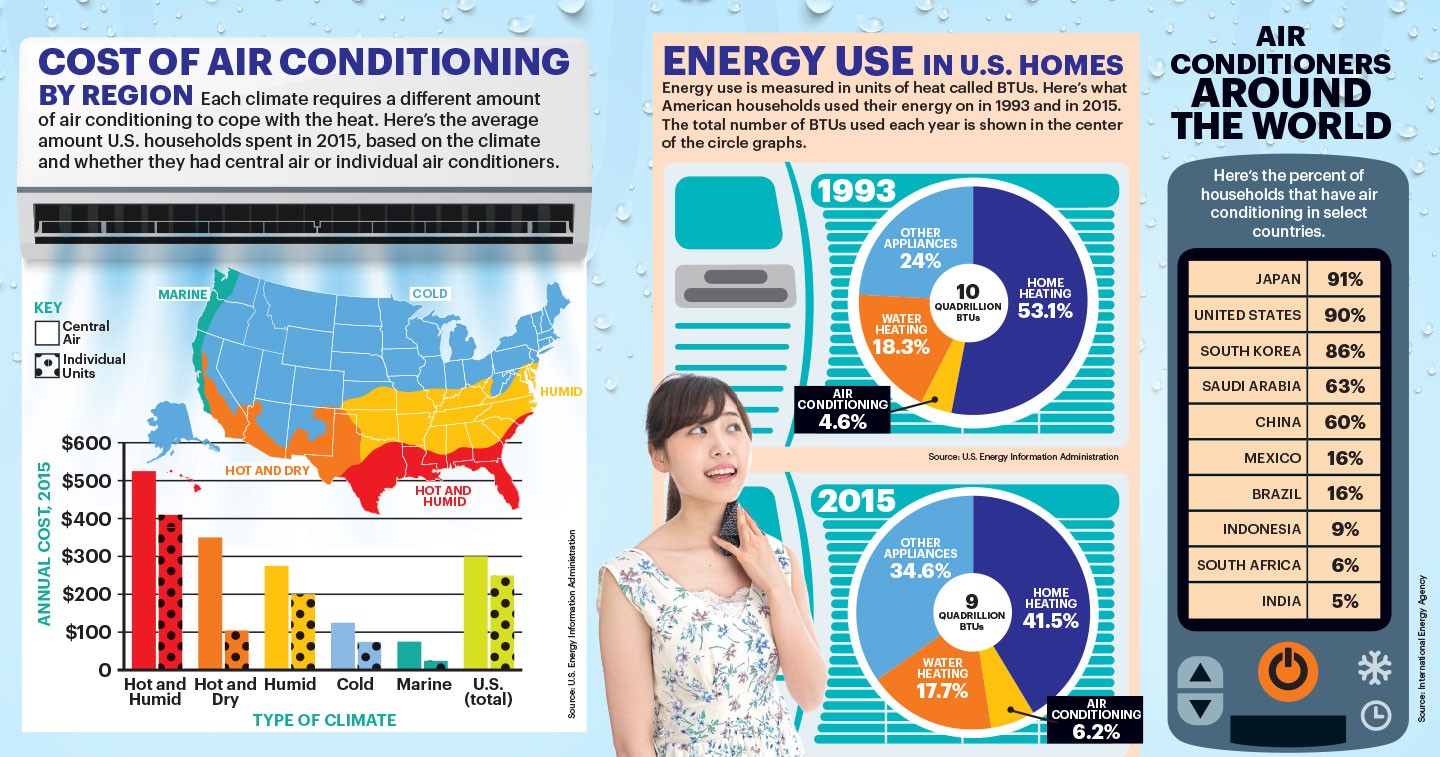When the temperature spikes in summer, air conditioning often saves the day. It chills homes, hospitals, and businesses. Air conditioning even keeps astronauts cool in space!
But did you know that air conditioning was invented more than 100 years ago? You can thank Willis Carrier, an engineer at Buffalo Forge Company in New York. His boss asked him to figure out how to reduce the humidity at a publishing company. The damp air was causing magazine pages to stick together and the ink to run.
Carrier created a machine that ran frigid well water through a series of small coils of pipes. A fan blew the warm air from a room over the coils. The chilled coils pulled the humidity out of the air, like how drops of condensation appear on your drinking glass. As an added bonus, this process also cooled the air, which was released back into the room. No more humidity or wrinkled pages!
For the next few decades, air conditioners were only in the homes of the wealthy. They had both the money and the space for the giant machines. As air conditioners and central cooling systems got more efficient, smaller, and cheaper, they became a staple in many homes. Today, about 48 percent of all home energy use in the U.S. goes toward heating and cooling.
Air conditioning is also crucial in transporting food, keeping hospital air clean, and preventing the servers that store the internet’s information from overheating. “It’s hard to imagine a world without air conditioning,” says Patrick Phelan, an engineer at Arizona State University. “We take it for granted.”


